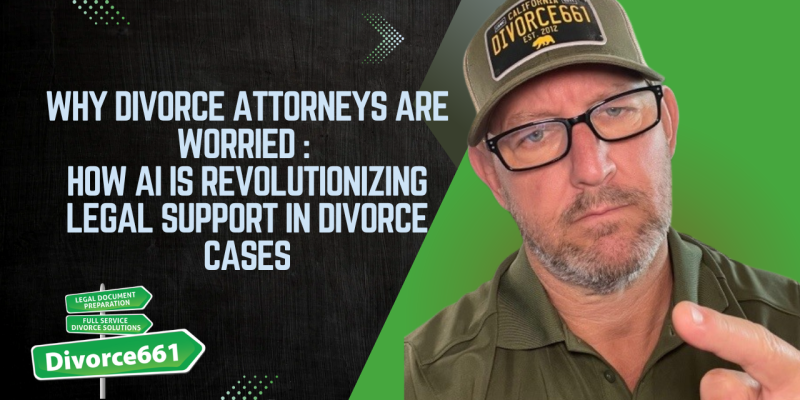How To Terminate Spousal Support On Long Term California Marriage
When it comes to divorce in California, one of the more complicated issues involves terminating spousal support, especially after a long-term marriage. As someone who has helped many clients navigate this process, I want to share some crucial insights on how to properly terminate spousal support in marriages lasting over 10 years. The rules might seem straightforward at first, but they can get quite complex, so understanding the court’s jurisdiction and the necessary agreements is essential.
Understanding Long-Term Marriage and Spousal Support Jurisdiction
In California, a long-term marriage is defined as any marriage lasting more than 10 years. The key point to remember is that the court retains jurisdiction over spousal support indefinitely for these marriages. What does this mean?
- Even if the court orders no spousal support or sets spousal support to $0, the court still holds the power to revisit the issue in the future.
- Either spouse can return to the court at any time if there is a significant change in circumstances—such as the loss of a job, health issues, or other major life events—and request spousal support.
Because the court’s jurisdiction remains open indefinitely, many individuals don’t want to leave that door open. They prefer to close it once and for all, so the issue of spousal support cannot be revisited down the road.
How to Terminate Spousal Support on a Long-Term Marriage
Terminating spousal support in a long-term marriage is possible, but it requires a specific process:
- Both spouses must agree to waive any future rights to spousal support.
- This agreement is formalized through a detailed waiver, often spanning a full page, which states that neither party can ask the court for spousal support in the future under any circumstances.
- Both spouses must sign and initial this waiver to confirm their understanding and agreement.
This agreement effectively closes the door on spousal support, and the court no longer maintains jurisdiction over it. However, it’s important to note that this termination cannot be done unilaterally or without the other party’s involvement.
Why Some Divorce Judgments Are Rejected When Trying to Terminate Support
A common issue I encounter is when individuals try to handle their divorce on their own and run into trouble terminating spousal support on long-term marriages. Here’s what typically happens:
- They file what’s called a default judgment, where the other party (the respondent) does not participate or respond.
- The court then rejects the judgment because California law does not allow termination of spousal support in long-term marriages without both parties agreeing.
- Simply marking “terminate jurisdiction” on the petition is not enough if the other spouse has not agreed and signed the waiver.
In other words, the court cannot override state law and allow spousal support termination in a true default scenario without agreement.
Default vs. Hybrid Cases: The Key Difference
Many people want to save on court fees and avoid a lengthy process, which is understandable. There are two main types of cases to be aware of:
- True Default Case: The respondent does not participate at all. This is where the court rejects termination of spousal support on long-term marriages without agreement.
- Hybrid Case (Default with Agreement): The respondent does not have to file a formal response, but both parties sign an agreement—especially the waiver of spousal support rights. This satisfies the court’s requirement and allows termination of spousal support.
The hybrid approach is the best way to save money on court fees while ensuring that the termination of spousal support is legally binding. It requires cooperation from both spouses, even if the respondent doesn’t actively file paperwork.
What to Do If You Can’t Get Agreement
If you find yourself in a situation where the other party will not agree to terminate spousal support in a long-term marriage, your option is to accept that the court will reserve jurisdiction over the issue. This means:
- The court keeps the authority to order spousal support in the future.
- Your divorce judgment will reflect that spousal support jurisdiction is reserved and not terminated.
This may not be ideal for everyone, but it’s important to understand that California law prioritizes fairness and the ability to revisit support in the future, especially for long-term marriages.
Final Thoughts
Terminating spousal support on a long-term California marriage requires careful consideration and proper legal steps. The key takeaway is that both spouses must agree to waive future spousal support rights through a signed waiver. Attempting to terminate support unilaterally through a default judgment will almost certainly be rejected by the court.
If you’re navigating this process and want to avoid common pitfalls, consider the hybrid approach where you can save on court fees but still have both parties involved in the agreement.
For those who need assistance, scheduling a consultation with a professional experienced in California divorce law can make a significant difference in successfully finalizing your divorce and spousal support arrangements.
Remember: The court’s jurisdiction over spousal support in long-term marriages is indefinite unless both spouses explicitly agree to terminate it.
If you want to learn more or need help preparing or finishing your divorce in California, don’t hesitate to reach out to a qualified expert who can guide you through the process smoothly.










